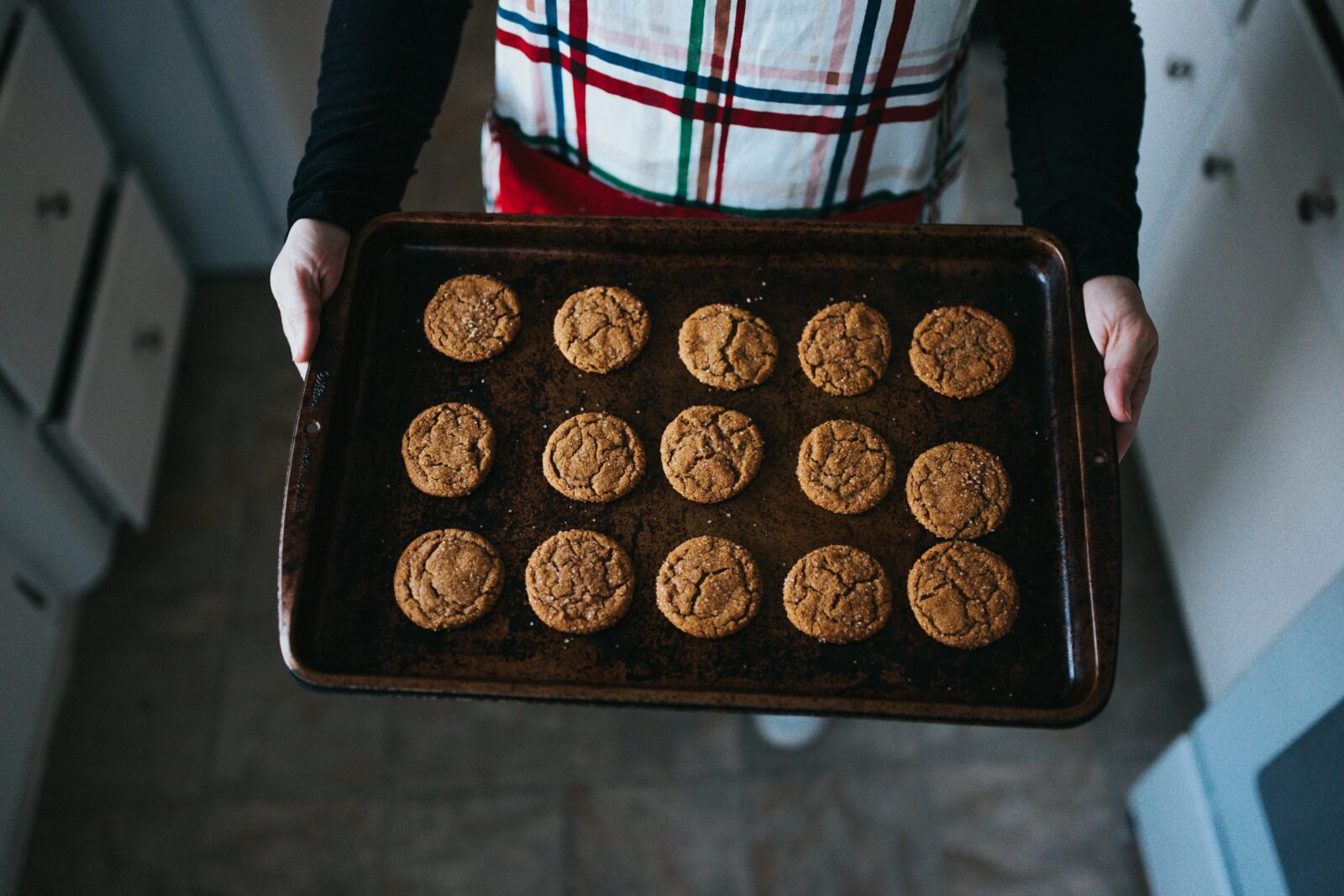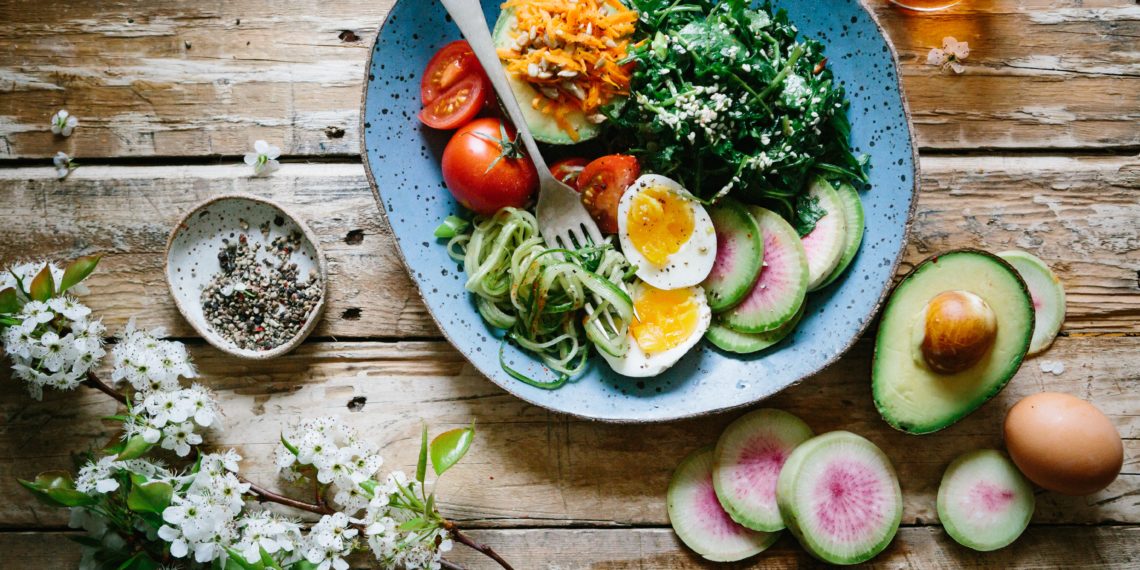
The explosion of ketogenic diet headlines may lead you to believe this is a new way of eating, but in fact, humans have been eating the ketogenic diet for tens of thousands of years. It’s only recently, say in the past several hundred years or so, that we stopped eating this way. This is a long period for testing safety and efficacy in our health.
— David Perlmutter, MD
These 5-Ingredient Keto Cardamom Cookies are my husband’s favorite cookies and my go-tos for bringing to friends’ homes for a healthy holiday dessert. My husband, who lost 20 pounds on a ketogenic diet, likes them so much he’s given them the nickname, “BCEs,” for Best Cookies Ever.
Good news then that they won’t raise your blood sugar or add to your waistline — assuming you don’t gorge. These cookies avoid the top four autoimmune food triggers: gluten, dairy, eggs, and sugar. That said, they do contain nuts which some people are sensitive too. In my case, I’m sensitive to almonds and vanilla so I use a combination of organic and raw sprouted walnuts and pecans; and the flavor of cardamom is a warm spice that will make you forget vanilla. Note that grass-fed ghee is clarified butter that does not contain the allergens casein, lactose or whey so is safe to eat for most people with dairy sensitivities.
5-Ingredient Keto Cardamom Cookies
(low carb, egg, dairy, gluten, and sugar-free)
Yield: About 40 cookies
Serving Size: 2 cookies
Ingredients
- 2 cups organic nut “flour” (can be mix of pecans, walnuts, almonds, macadamia nuts, pine nuts you pulse in a blender)
- 1 TBSP organic ground cardamom
- 1/3 cup granulated birch-based (not corn-based) xylitol. If it doesn’t say birch on the package it’s made from corn. Find in natural food stores or online like this one: Anthony’s non-GMO birch Xylitol. I like to mix up natural (non-glycemic) sugars so sometimes do nearly 1/3 cup xylitol with some 100% organic monk fruit powder.
- ¼ tsp sea salt
- ⅓ to ½ cup grass-fed ghee, softened or melted
Instructions
1. Preheat oven to 350 F and line 2 baking sheets with parchment paper.
2. Melt or soften in double-boiler ½ cup grass-fed ghee (you may only need ⅓ cup)
3. In a large bowl, stir together nut flour, xylitol, cardamom, and salt.
3. Stir in ghee until slightly moist and crumbly. Might be ⅓ or ½ cup. Don’t drench it, just get it moist.
5. Use a teaspoon to grab a glob of “dough,” roll and press between your palms to form a quarter-sized round and place on baking sheets. My trays are typically 4 cookies wide and 5 long.
6. Bake just 6 minutes. Note that they will not be browned or retain their shape — it’s the freezer where the magic happens that binds the ghee.
7. Cut the parchment in half (if you have 5 rows, it will be one batch of 2 rows and another of 3 rows) and transfer to plates or trays that will fit in your freezer.
8. Cookies are fragile and will crumble or disintegrate when warm or room temperature so store in freezer for best results.
Notes
Serving size: 2 cookies.
For info on the health benefits of a ketogenic (keto) diet, enjoy this excerpt from my book, Beat Autoimmune:
Consider Ketosis…With Cautions
If you’re up on recent health and diet trends, chances are good that you’ve at least heard of the ketogenic (or just “keto”) diet. While it may seem like the latest fad diet, it’s actually the way we’ve been eating for the past 200,000 years — with the exception of the last 100 years, thanks to the advent of modern agriculture. Our biology is built for feast and famine cycles, not for 24×7 feasting and snacking. Until recent history, we feasted when food was available, and we stored it as fat to draw down on for longer periods of famine.
Turns out that the keto diet, partnered with periodic fasting, enables us to mimic ancestral feast-famine cycles. By emphasizing healthy fats, moderating protein intake and restricting carbs (roughly 70% fat, 25% protein and 5% carbs), hunger is greatly reduced, calorie intake goes down, energy soars, brain function improves, inflammation is lowered, and insulin resistance can even be reversed.
Research shows that a ketogenic diet may be especially beneficial for people with neurological conditions including epilepsy or other seizure disorders, MS, Parkinson’s, and Alzheimer’s; and for people with type 2 diabetes, insulin resistance and/or who are overweight or obese. As with almost anything that sounds too good to be true, there are cautions. Thanks to The Paleo Mom, Sarah Ballantyne, PhD, for sharing these red flags: The ketogenic diet may harm liver, kidney and thyroid function; it may mess with the balance of your microbiome; it can create hormonal imbalances; and may increase cardiovascular risk factors and lower bone mineral density.
Bottom line, before diving into a high fat, very low carb, ketogenic diet, work with your trusted healthcare practitioner to determine whether or not you are a good keto candidate. You will want to closely monitor your blood sugar levels, kidney, liver, and thyroid function, and markers of inflammation to make sure you stay out of the harm zone. For many people, dipping in and out of ketosis periodically, like a few times per week or 4 times per year, may be ideal to derive the greatest benefits while avoiding the biggest pitfalls.
For more help easing into a ketogenic diet consider these awesome books:
The Keto Reset Diet: Reboot Your Metabolism in 21 Days and Burn Fat Forever by Mark Sisson
Keto Quick Start: A Beginner’s Guide to a Whole-Foods Ketogenic Diet with More Than 100 Recipes by Diane Sanfilippo
Take good care!

P.S. If you want my personal help, and you’re ready, willing, and able to invest in your best health and you live in the continental U.S., I offer Functional Medicine Total Health Transformation Programs over Zoom in collaboration with a skilled naturopath (ND). If you are committed to beat autoimmune and reclaim your best life you are welcome to a Complimentary 30-Minute Discovery Call with me to gain clarity, confidence, and explore the possibility of working together.









